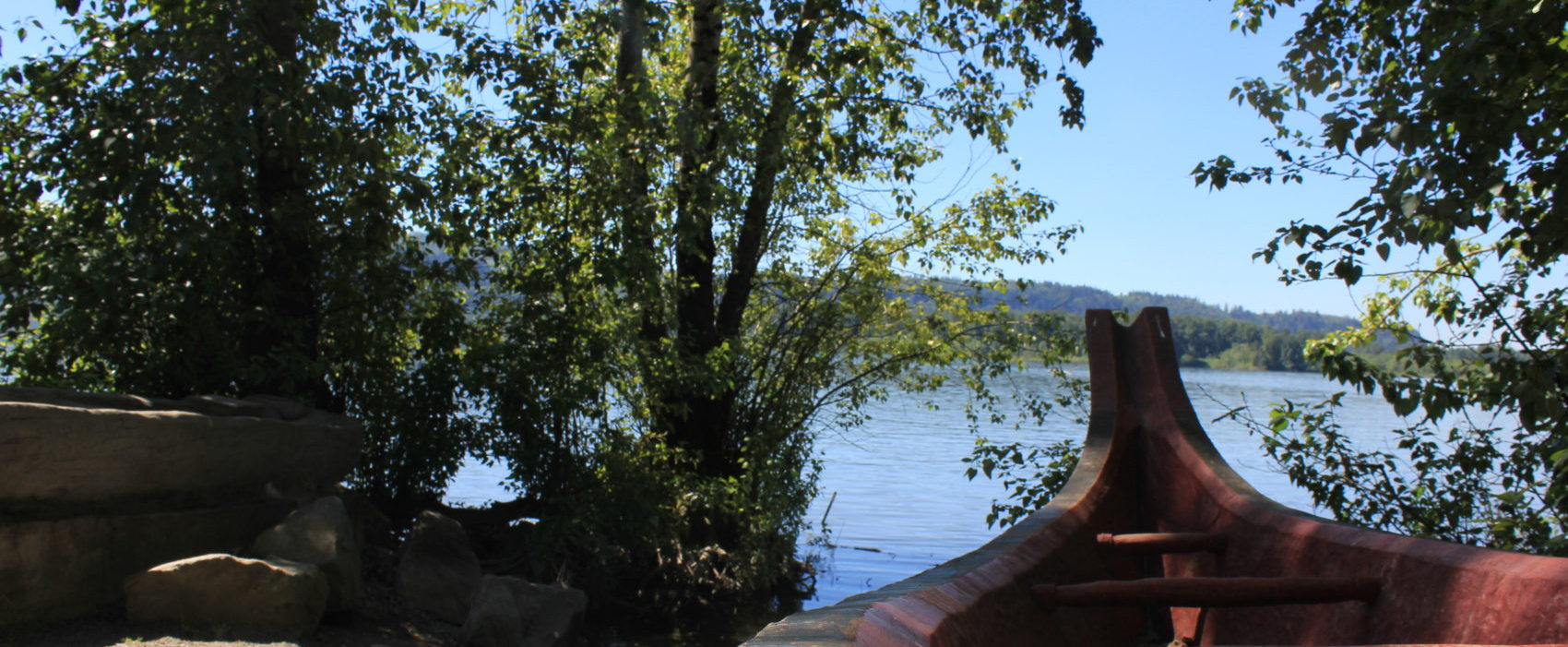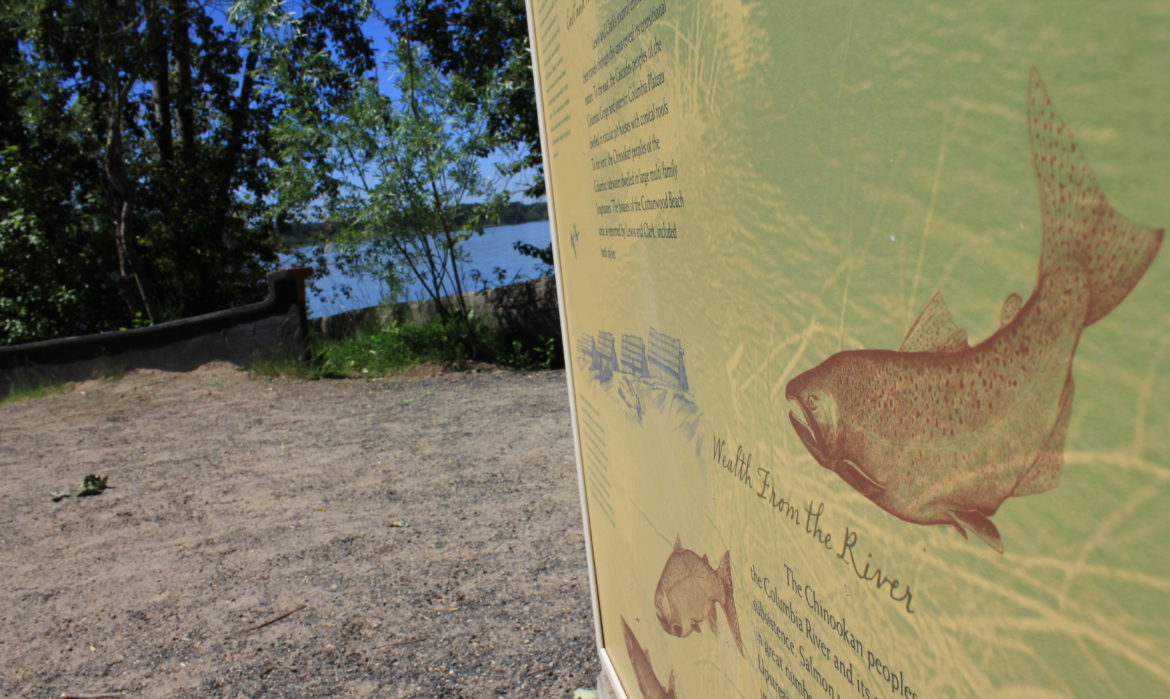Lewis and Clark Camps
Although the Corps of Discovery moved swiftly through this region on their downstream journey, they lingered on the way home. Weather, a late salmon run, the need to gather provisions, and a missed exploration opportunity led to longer-than-anticipated stay at this Cottonwood Beach provision camp.
In his journal, Clark initially anticipated only a day or two at Cottonwood Beach. But the Upper Chinookan-speaking Indians presented the captains with two pieces of bad news. First, they had missed exploring a crucial river.
“ we formed a camp in a small prairie on the North side of the Columbia where we intend to delay one or two days to make some celestial observations, to examine quick sand (Sandy) river, and kill some meat to last us through the western mountains…” (-Clark, March 31st 1806)
On the downstream journey, the explorers had mapped the mouths of the Washougal and Sandy rivers, which they assumed drained the huge valley between the Cascades and the Coast Range. According to the local natives however, both of those rivers were quite short.The Second piece of bad news was even more alarming: the spring Chinook salmon run had not begun.
“We were visited by several canoes of the natives… most of whom were descending the river with their womin and children, They inform us that they reside at the great rapids and their relations at that place were much streightened for the want of food; that they had consumed their winter store of dryed fish and those of the present season has not yet arrived.” (-Clark, April 1st 1806)
In the following days, the Corps witnessed a continuous stream of canoes filled with starving families. This could only mean trouble: “… under these circumstances there seams to be a gloomy prospect for subsistence on any terms,” wrote Clark on April 1st, 1806. Boats filled with “half starved” families, who “picked up the bones and little refuse meat which has been thrown away by the party.” (-Clark, April 3rd 1806)
The group had no choice but to stay. While Clark took six men back downstream to explore and map the river that would later be known as the Willamette, hunting parties made trips into the hills for elk, deer, and bear. Ultimately, their long stay at Cottonwood Beach proved valuable. Information collected here helped create the first maps of the Willamette River and this area. And the food gathered here sustained the expedition through the first part of their journey home.



